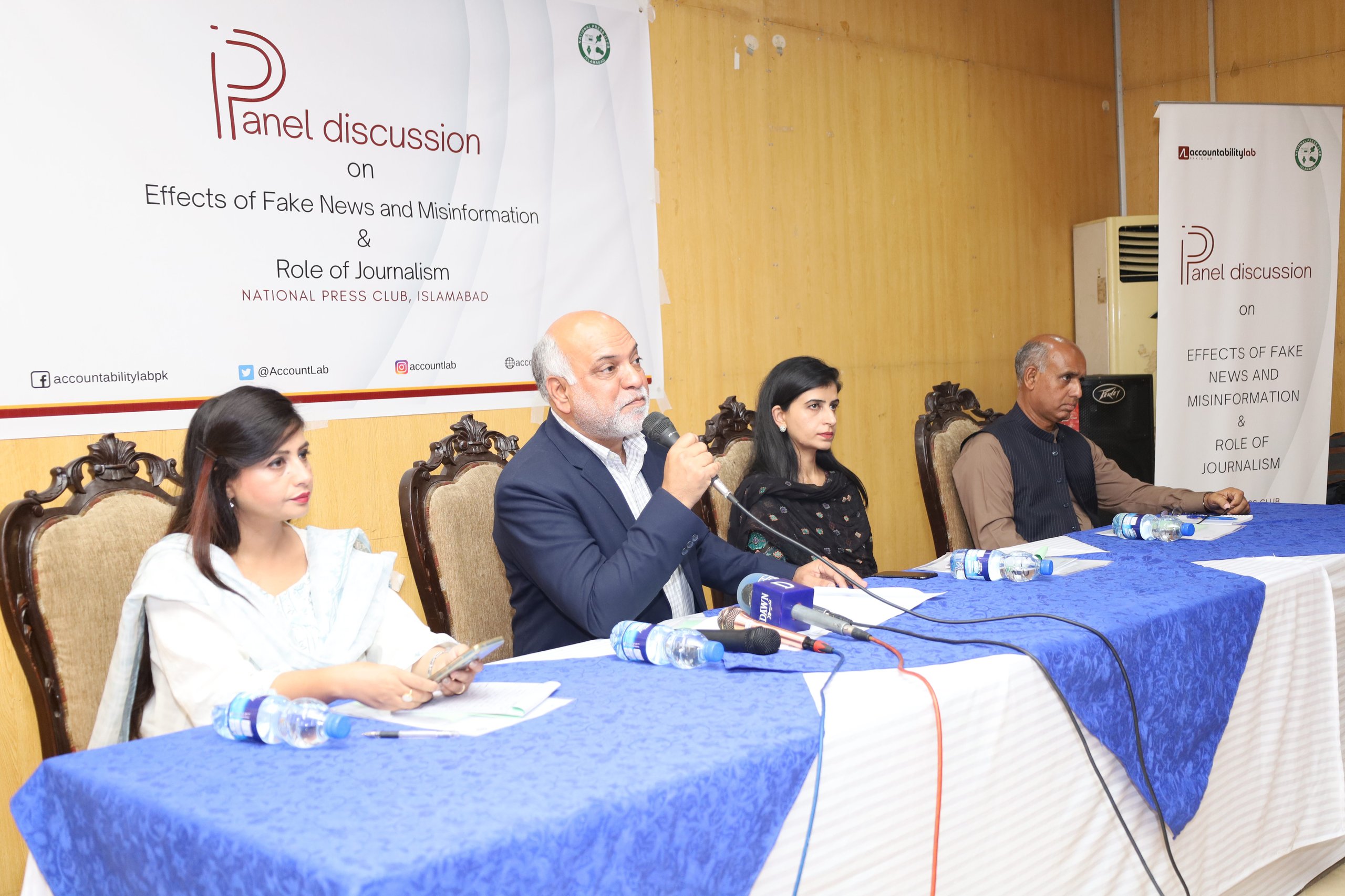NEWS
December 12, 2022

IN BRIEF
Written by Khadijah Saeed Fake news refers to the deliberate spread of misinformation and often has an ulterior motive for political, social, economic, or personal gains. It is a fabricated expression disseminated systematically in an organized manner, which appears true. Such stories consist of nonfactual information and sources that often affect electoral behaviors and influence conditions of wars to promote divisive narratives. Fake news has emerged as a threat multiplier in a digitally interconnected world. The motivation behind the dissemination of fake news by media houses stems from the attraction for sensationalism among the audience. Each burning geopolitical issue accompanies [...]
SHARE
Written by Khadijah Saeed
Fake news refers to the deliberate spread of misinformation and often has an ulterior motive for political, social, economic, or personal gains. It is a fabricated expression disseminated systematically in an organized manner, which appears true. Such stories consist of nonfactual information and sources that often affect electoral behaviors and influence conditions of wars to promote divisive narratives. Fake news has emerged as a threat multiplier in a digitally interconnected world.
The motivation behind the dissemination of fake news by media houses stems from the attraction for sensationalism among the audience. Each burning geopolitical issue accompanies a set of versions amplified by digital media to the detriment of factual realities. This was visible during the COVID-19 crisis. Besides bringing deaths to millions worldwide, it steered debates on the multiple cooked-up theories about its origin to covering up countries’ mismanagement of the global health crisis. This fueled anti-Asian racism in the Western world and further strained U.S.-China relations.
Disinformation has historically been used in wars as part of psychological warfare tactics to legitimize certain positions. Since the Russian invasion of Ukraine in February 2022, the war has been fogged by fake news and disinformation campaigns. The “Ghost of Kyiv,” as was celebrated by millions on digital and social media for months, was a supposed folk hero fighter pilot credited for shooting down more than three dozen Russian fighter jets. Little did millions know that videos of the ‘legendary pilot’ circulated online channels of a game simulation in 2008. The “Ghost of Kyiv” was found to be fake.
Over the last decade, fake news and disinformation campaigns have also had a detrimental impact on the electoral behaviors and results of elections in different countries. In 2016, a conspiracy theory was manufactured and flouted by Twitter bots during the U.S. Presidential elections accusing the then Democrat Nominee Hilary Clinton and John Podesta, the White House Deputy Chief of Staff, of child trafficking. This convinced a 28-year man, who, in his quest to self-investigate the theory, fired three shots with a semi-automatic rifle inside a Pizzeria in Washington. He believed this act would save children trapped in sex slavery. In 2018, news circulated in Pakistan indicating that former Premier Nawaz Sharif had hired the services of Cambridge Analytica. The report claimed it was to ensure that his political party wins the 2018 General Elections. However, there was insufficient data to back the claims published in the report.
False blasphemy accusations have surrounded Pakistani society and have contributed to exacerbating polarization in the country. In April 2013, a 23-year-old boy, Mashal Khan, succumbed to vigilante justice in his alma mater, Abdul Wali Khan University, Mardan. The allegations of posting blasphemous content online were not true, but a young man lost his life to hate powered by fake news. In a similar unfortunate display of barbarism, a Sri Lankan national, Priyantha Kumar, lost his life in the Pakistani city of Sialkot. This happened when an angry mob took it upon themselves to make him ‘atone’ for his alleged blasphemous remarks.
These examples of ulterior motives to influence public opinion are the recipes for deadly propaganda. Throughout history, fake news has been used to alter political discourse, spread xenophobia, and has been proven detrimental to the organic process of forming public opinion. In Joseph Goebbels, the Nazi’s Chief propagandist’s view, “If you tell a lie big enough and keep repeating it, people will eventually come to believe it.” The politician, through his propagation of anti-Semitic sentiment, was able to pave the path for the holocaust and change the course of history for the European Jews. With the digital penetration in South Asian countries, India and Pakistan, fake news influenced the states’ behavior during the Pulwama Crisis in 2019, even bringing two nuclear-armed countries to war. The digital space was overwhelmed with fake news and had set the stage for another battlefield, fuelling anti-Pakistan sentiment across India. In times of war, it often helps populist leaders to garner support for confrontation.
Given the damaging results of fake news on peace, social stability, human rights, and democracy, it is essential to understand how it originates and learn to differentiate between the fake and the real. The spread can be countered by incorporating media literacy into the national curriculum and by encouraging critical thinking in citizens. Research around fake news narratives and their root causes must be explored and examined to understand its ramifications.
